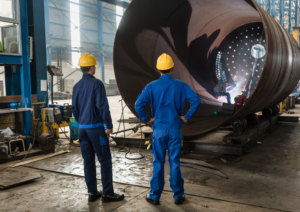Asia is at the forefront of the global energy transition, a shift critical for combating climate change and ensuring sustainable economic growth. As the most populous continent, Asia’s energy demand is surging, driven by rapid industrialization, urbanization, and economic development. However, this increased demand is currently being met predominantly by fossil fuels, making the region responsible for over half of the world’s carbon emissions. To mitigate climate change impacts, many countries in Asia have committed to transitioning towards cleaner, renewable energy sources. However, achieving these ambitious goals requires significant investment. Strategic investments in clean energy, infrastructure, and technology are key to accelerating the energy transition in Asia, and recent data and trends highlight the magnitude of the challenge and opportunity.
Asia’s Energy Demand and Carbon Emissions
Asia’s energy consumption has grown exponentially in recent decades, driven by the region’s economic expansion. According to the International Energy Agency (IEA), Asia accounted for approximately 43% of the world’s energy consumption in 2022, with China and India being the largest contributors. Despite increasing adoption of renewable energy, coal remains the dominant energy source, particularly in Southeast Asia, where it accounted for around 35% of the region’s energy mix in 2021. This dependency on coal has resulted in high carbon emissions, making Asia a crucial player in global efforts to limit temperature rises.
With a growing population and industrialization, Asian countries are expected to experience continued growth in energy demand. The IEA projects that by 2030, Asia’s energy demand will increase by 25%, and fossil fuels will still account for a significant share of the mix without aggressive policy changes and investment in cleaner energy sources.
The Role of Investment in Energy Transition
The energy transition in Asia will require trillions of dollars in investment over the coming decades. According to the International Renewable Energy Agency (IRENA), the region needs to invest $1.3 trillion annually to meet climate and energy targets by 2050. This includes investments in renewable energy projects, energy storage systems, energy efficiency, and modernizing the grid infrastructure.
- Renewable Energy Projects
Investment in renewable energy—such as solar, wind, and hydropower—is a cornerstone of the energy transition. In 2022, Asia made significant strides in this area, with China leading the charge. The country invested nearly $546 billion in clean energy, accounting for more than half of the global total. Other countries, such as India, Vietnam, and Indonesia, are also expanding their renewable energy capacity. For example, India aims to reach 500 GW of renewable energy capacity by 2030, requiring an estimated $500 billion in investments.
Southeast Asian countries, particularly Indonesia and Vietnam, have significant potential for renewable energy expansion. Indonesia, for instance, with its abundant geothermal and solar resources, could accelerate the transition with increased investment. The ASEAN Centre for Energy estimates that the region needs about $290 billion in renewable energy investment by 2040 to meet its climate goals.
- Energy Efficiency Investments
Improving energy efficiency is another critical component of the energy transition. According to the IEA, doubling energy efficiency by 2030 could reduce global emissions by 12%, significantly supporting the transition to a net-zero economy. In Asia, energy efficiency investments can play a pivotal role in sectors such as manufacturing, construction, and transportation, where energy-intensive processes dominate.
Countries like Japan and South Korea have made considerable progress in enhancing energy efficiency, but many developing nations in the region still lag behind. Increased investment in energy-efficient technologies—such as smart grids, advanced manufacturing systems, and green buildings—can help these countries reduce their overall energy consumption while continuing to grow economically. The IEA estimates that investments in energy efficiency improvements in Asia could lead to savings of up to $2 trillion in energy costs by 2040.
- Grid Modernization and Energy Storage
The transition to renewable energy requires upgrading the existing grid infrastructure, which is often outdated and ill-equipped to handle intermittent renewable sources like solar and wind. Investment in modernizing grids is essential for integrating large amounts of renewable energy, improving reliability, and reducing energy loss. Countries such as China and India are making significant investments in grid modernization, but more effort is needed across the region to ensure that renewable energy can be effectively distributed.
Energy storage systems, particularly battery storage, are also crucial for addressing the intermittency challenges of renewable energy. Asia has seen significant growth in investment in battery storage technologies, particularly in China, where investments in lithium-ion battery manufacturing have surged. Battery storage will play a vital role in balancing supply and demand, enabling a more resilient and flexible grid system.
Barriers to Investment
While the potential for accelerating the energy transition in Asia through investment is enormous, several barriers exist. Regulatory frameworks, political instability, and a lack of long-term policy clarity in some countries can deter investors. Additionally, fossil fuel subsidies remain prevalent in several Asian economies, making it difficult for renewable energy to compete on a level playing field.
For instance, Indonesia, one of the largest emitters of carbon in the region, continues to heavily subsidize coal, which discourages the development of renewable energy. Addressing these subsidies and creating a more favorable regulatory environment for clean energy investment will be crucial in overcoming these challenges.
The Role of International Cooperation and Green Finance
International cooperation and green finance mechanisms can help bridge the investment gap and accelerate the energy transition. Financial institutions, including the Asian Development Bank (ADB) and the World Bank, are increasingly providing funding for clean energy projects in Asia. Additionally, the rise of green bonds and climate finance has opened up new avenues for private sector investment.
In 2021, the ADB launched its Energy Transition Mechanism (ETM) to help countries in Southeast Asia retire coal plants early and replace them with renewable energy. This initiative aims to mobilize $30 billion in public and private capital, providing a blueprint for future energy transition projects across the region.
Investment is the driving force behind Asia’s energy transition, offering the potential to significantly reduce carbon emissions, meet growing energy demands, and support sustainable development. With the right level of financial commitment and policy support, Asia can play a pivotal role in the global effort to transition to cleaner energy. However, overcoming the barriers to investment and ensuring equitable distribution of resources will be key to realizing this vision. By channeling strategic investments into renewable energy, energy efficiency, grid modernization, and energy storage, Asia can pave the way for a cleaner, greener future.





